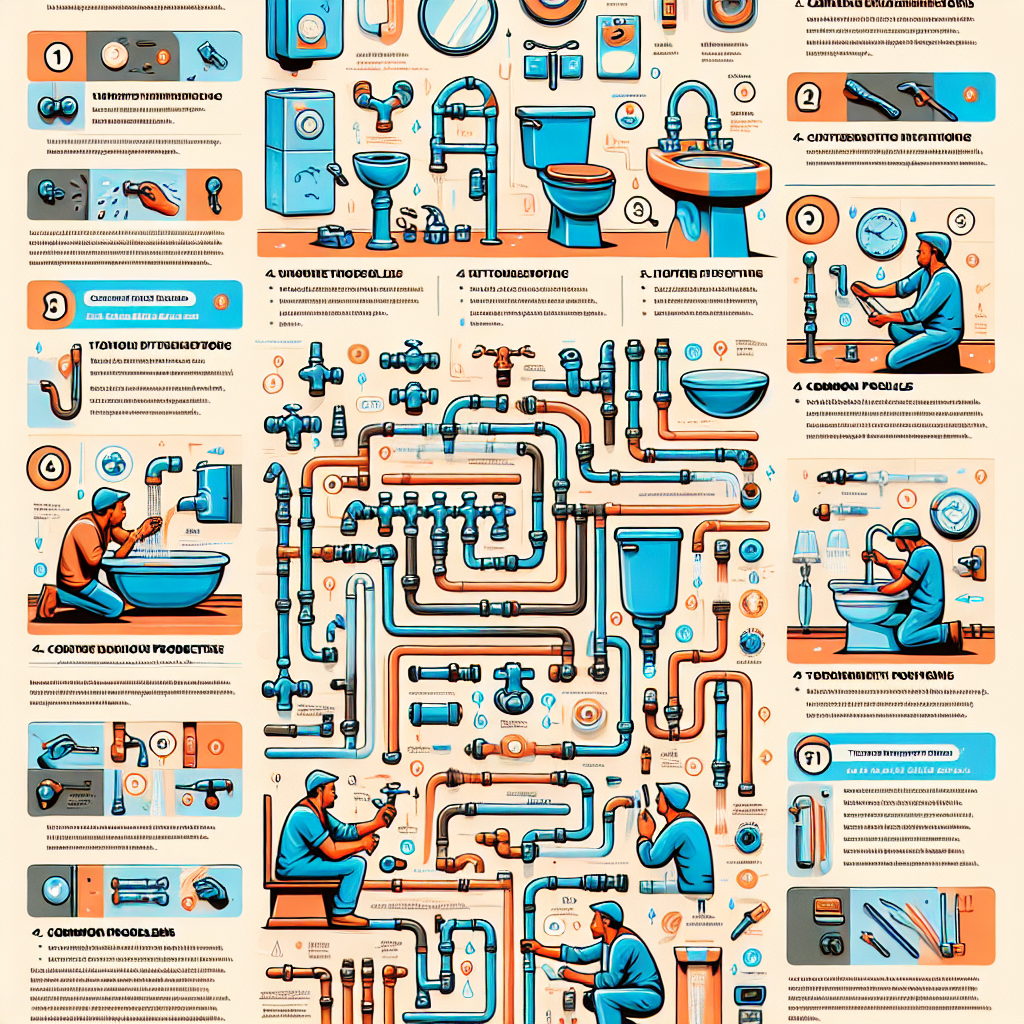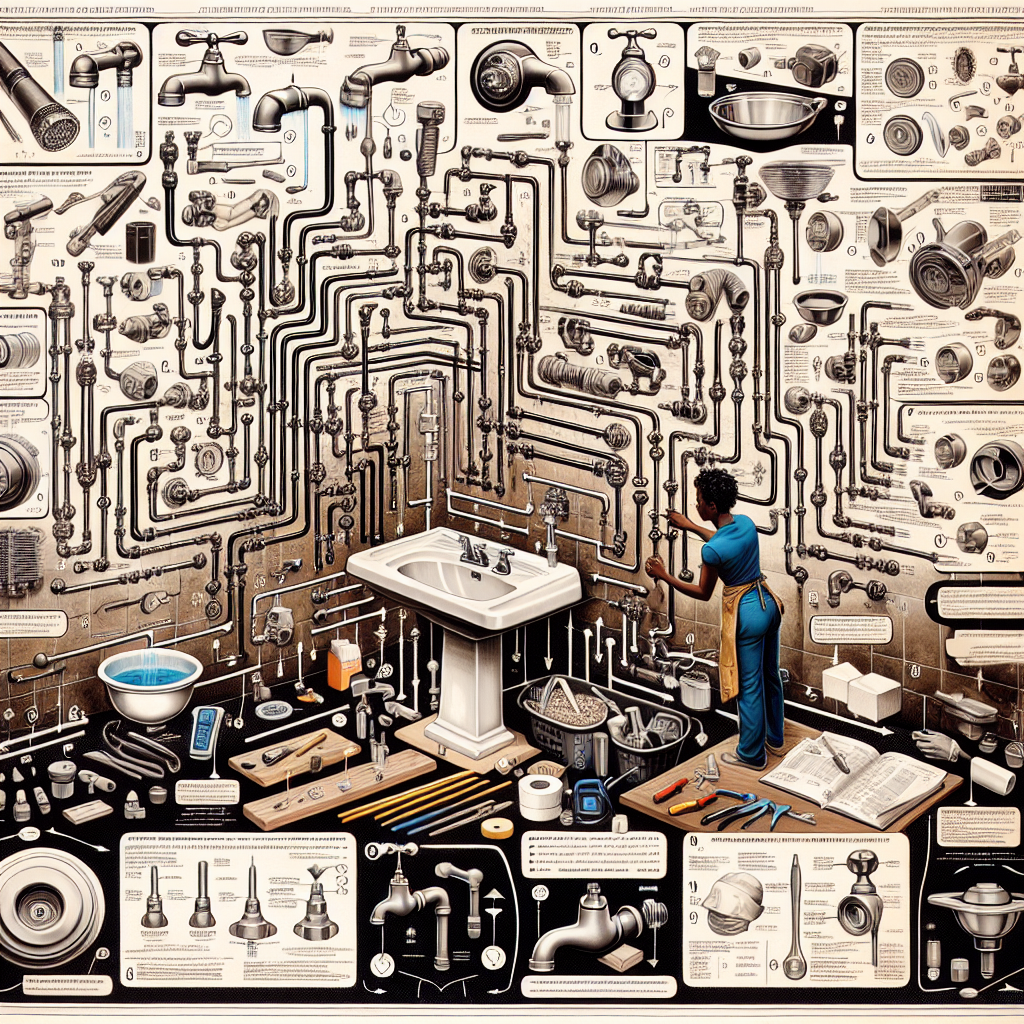Plumbing Fixture Installation Troubleshooting Guide

Plumbing fixture installation can be a complex task, requiring careful attention to detail and knowledge of the various components involved. From faucets and toilets to showers and sinks, each fixture requires proper installation to ensure functionality and prevent leaks or other issues. However, even with the best intentions and skills, problems can arise during the installation process. In this comprehensive troubleshooting guide, we will explore common issues that may occur during plumbing fixture installation and provide valuable insights on how to address them effectively.
Table of Contents
- 1. Common Issues During Plumbing Fixture Installation
- 2. Troubleshooting Tips for Faucet Installation
- 3. Addressing Problems with Toilet Installation
- 4. Shower Installation Troubleshooting
- 5. Sink Installation Issues and Solutions
- 6. Frequently Asked Questions about Plumbing Fixture Installation Troubleshooting
1. Common Issues During Plumbing Fixture Installation
Before diving into specific troubleshooting tips for different plumbing fixtures, it’s important to understand the common issues that can occur during installation. By being aware of these potential problems, you can take proactive measures to prevent them or address them promptly.
1.1 Leaks
Leaks are one of the most common issues encountered during plumbing fixture installation. They can occur due to various reasons, such as improper sealing, loose connections, or damaged pipes. To prevent leaks, ensure that all connections are tight and properly sealed. Additionally, inspect the pipes for any signs of damage or corrosion before installation.
1.2 Low Water Pressure
Low water pressure can be frustrating, especially when installing a new fixture. This issue can be caused by clogged pipes, faulty valves, or inadequate water supply. To troubleshoot low water pressure, check for any obstructions in the pipes, clean or replace clogged filters, and ensure that the water supply is sufficient for the fixture’s requirements.
1.3 Improper Fit
Another common issue is an improper fit between the fixture and the plumbing system. This can lead to leaks, unstable fixtures, or difficulty in using the fixture. To avoid this problem, carefully measure the dimensions of the fixture and ensure compatibility with the existing plumbing system. If necessary, use adapters or consult a professional plumber for assistance.
1.4 Inadequate Ventilation
Proper ventilation is crucial for plumbing fixtures, especially in bathrooms and kitchens. Inadequate ventilation can lead to unpleasant odors, mold growth, and moisture-related issues. During installation, ensure that the fixture is properly vented to allow for adequate airflow and prevent potential problems.
2. Troubleshooting Tips for Faucet Installation
Faucet installation is a common task in both kitchen and bathroom renovations. However, it can sometimes present challenges that require troubleshooting. Here are some tips to address common issues during faucet installation:
2.1 Dripping Faucet
If your newly installed faucet is dripping, it could be due to a loose connection or a faulty cartridge. Start by checking all connections and tightening them if necessary. If the dripping persists, consider replacing the cartridge, which is responsible for controlling the flow of water.
2.2 Low Water Flow
Low water flow from a newly installed faucet can be caused by debris or sediment clogging the aerator. Remove the aerator and clean it thoroughly to remove any obstructions. If the problem persists, check for any kinks or blockages in the supply lines.
2.3 Uneven or Loose Handle
If the faucet handle feels loose or wobbly, it may not have been properly installed. Check the handle’s mounting and tighten any loose screws or connections. If the handle is still uneven, consider replacing it with a new one.
3. Addressing Problems with Toilet Installation
Toilet installation can be a more complex task compared to other plumbing fixtures. Here are some troubleshooting tips to address common issues during toilet installation:
3.1 Leaking Base
If you notice water leaking from the base of the toilet after installation, it could be due to a faulty wax ring or an improper seal. To fix this issue, remove the toilet and inspect the wax ring. Replace it if necessary and ensure a proper seal between the toilet and the flange.
3.2 Weak Flush
A weak flush can be caused by various factors, including a clogged trapway, a faulty flapper, or an inadequate water level in the tank. Start by checking for any obstructions in the trapway and removing them if present. If the flapper is worn out or damaged, replace it. Adjust the water level in the tank according to the manufacturer’s instructions to ensure a proper flush.
3.3 Continuous Running
If the toilet continues to run even after flushing, it could be due to a faulty flapper or a problem with the fill valve. Inspect the flapper and replace it if necessary. If the fill valve is not functioning properly, consider replacing it to resolve the issue.
4. Shower Installation Troubleshooting
Shower installation requires careful attention to detail to ensure proper functionality and prevent leaks. Here are some troubleshooting tips for common issues during shower installation:
4.1 Leaking Showerhead
If your newly installed showerhead is leaking, it could be due to a loose connection or a faulty washer. Start by checking all connections and tightening them if necessary. If the leaking persists, replace the washer inside the showerhead to create a proper seal.
4.2 Inconsistent Water Temperature
Inconsistent water temperature during showering can be frustrating. This issue can be caused by a faulty mixing valve or an improper installation. Check the mixing valve and ensure it is functioning correctly. If the problem persists, consult a professional plumber to assess the installation and make any necessary adjustments.
4.3 Low Water Pressure
If you experience low water pressure in your newly installed shower, it could be due to a clogged showerhead or a problem with the water supply. Remove the showerhead and clean it thoroughly to remove any debris or sediment. If the problem persists, check the water supply lines for any obstructions or consult a professional plumber for further assistance.
5. Sink Installation Issues and Solutions
Sink installation, whether in the kitchen or bathroom, can encounter various issues that require troubleshooting. Here are some tips to address common problems during sink installation:
5.1 Leaking Drain
If you notice water leaking from the drain after sink installation, it could be due to a loose connection or an improper seal. Check all connections and tighten them if necessary. If the leaking persists, disassemble the drain and inspect the seals. Replace any damaged seals and ensure a proper seal between the sink and the drain.
5.2 Clogged Drain
A clogged drain can occur due to debris, soap scum, or hair accumulation. Use a plunger or a drain snake to remove any obstructions. If the clog is severe, consider using a chemical drain cleaner or consult a professional plumber for assistance.
5.3 Slow Draining
If the sink drains slowly after installation, it could be due to a partially clogged drain or an improper slope in the drainpipe. Remove any visible debris or obstructions from the drain. If the problem persists, consult a professional plumber to assess the drainpipe’s slope and make any necessary adjustments.
6. Frequently Asked Questions about Plumbing Fixture Installation Troubleshooting
6.1 How do I fix a leaking faucet?
To fix a leaking faucet, start by checking all connections and tightening them if necessary. If the leaking persists, consider replacing the cartridge, which is responsible for controlling the flow of water.
6.2 Why is my toilet leaking from the base?
If your toilet is leaking from the base, it could be due to a faulty wax ring or an improper seal. Remove the toilet and inspect the wax ring. Replace it if necessary and ensure a proper seal between the toilet and the flange.
6.3 How can I increase water pressure in my shower?
To increase water pressure in your shower, start by removing the showerhead and cleaning it thoroughly to remove any debris or sediment. If the problem persists, check the water supply lines for any obstructions or consult a professional plumber for further assistance.
6.4 What should I do if my sink drain is clogged?
If your sink drain is clogged, use a plunger or a drain snake to remove any obstructions. If the clog is severe, consider using a chemical drain cleaner or consult a professional plumber for assistance.
6.5 How do I fix a leaking drain under my sink?
To fix a leaking drain under your sink, check all connections and tighten them if necessary. If the leaking persists, disassemble the drain and inspect the seals. Replace any damaged seals and ensure a proper seal between the sink and the drain.
Summary
Plumbing fixture installation can present various challenges, but with the right troubleshooting techniques, these issues can be effectively addressed. By understanding common problems and their solutions, you can ensure a successful installation and prevent future complications. Remember to always follow manufacturer instructions and consult a professional plumber if needed. With proper installation and troubleshooting, your plumbing fixtures will provide reliable functionality for years to come.
For professional plumbing fixture installation and troubleshooting services, North Bay Contractors is here to help. Contact us today for all your plumbing needs!

